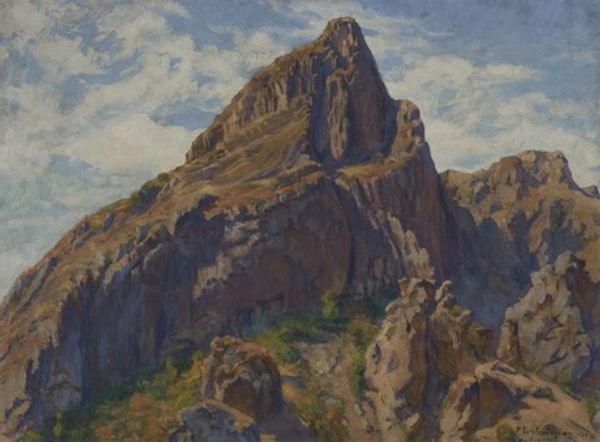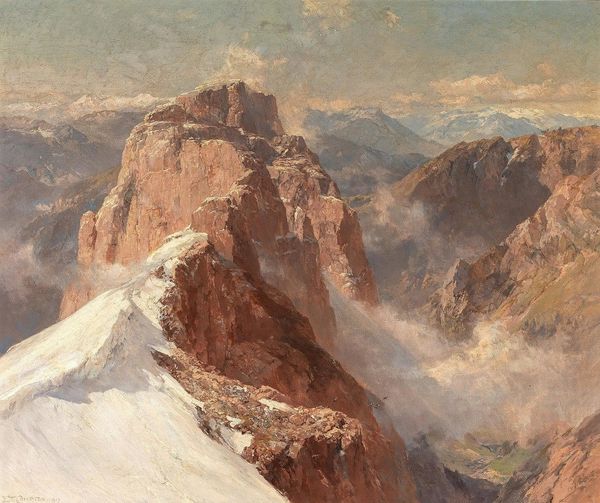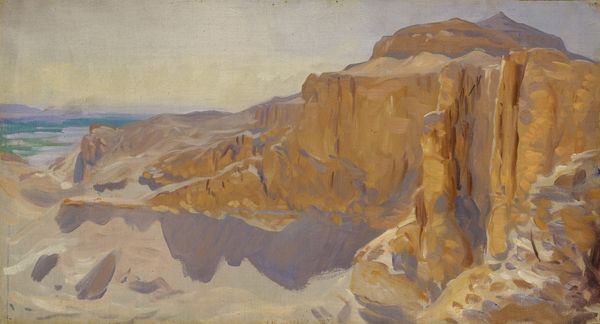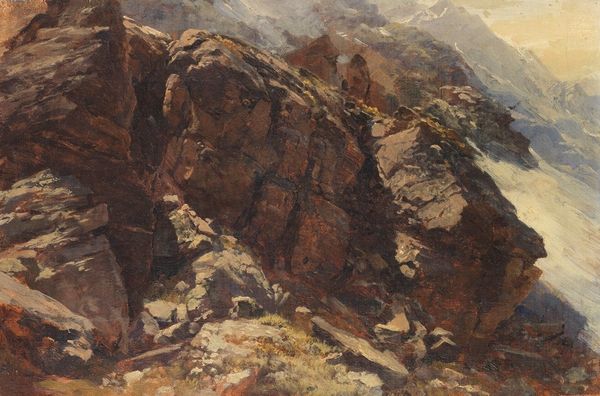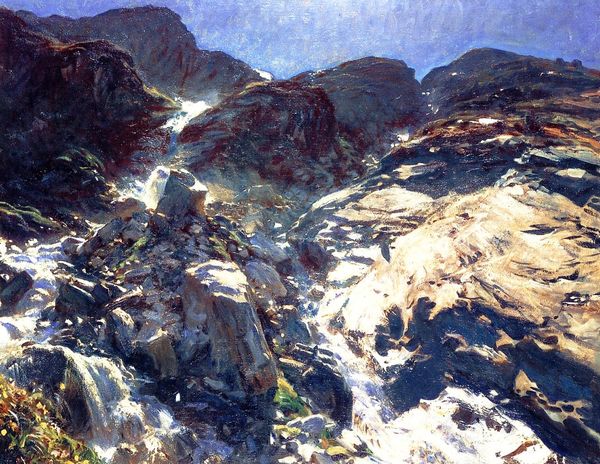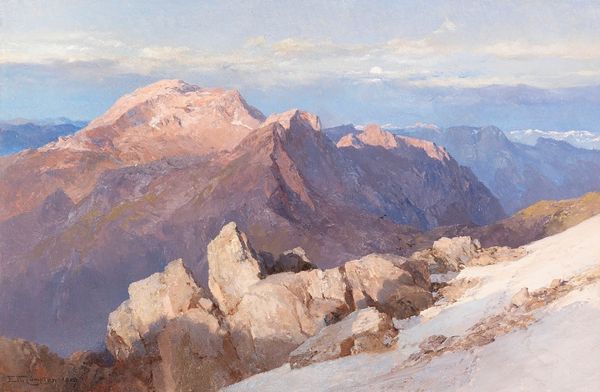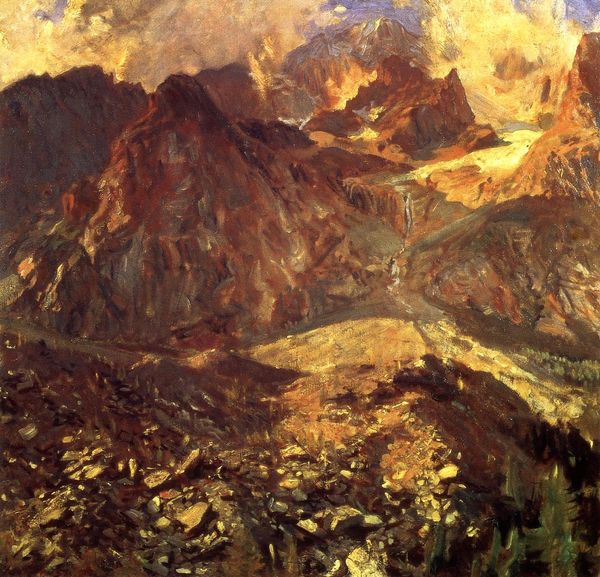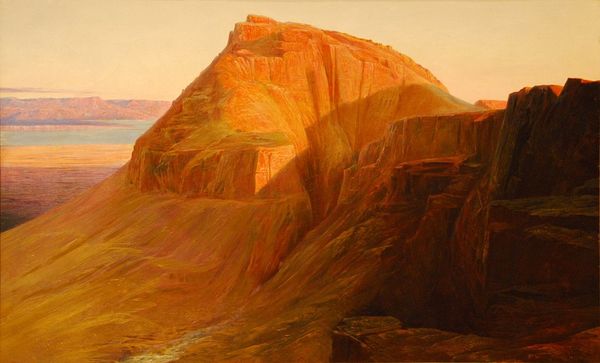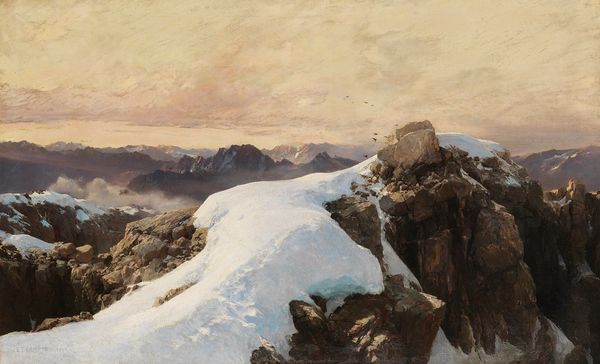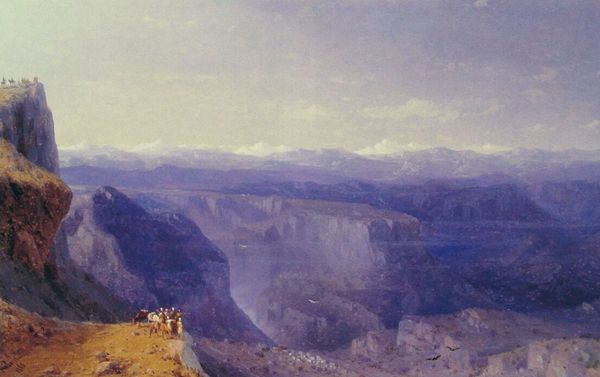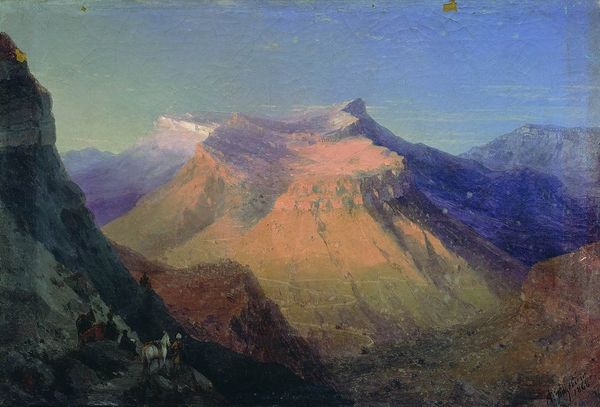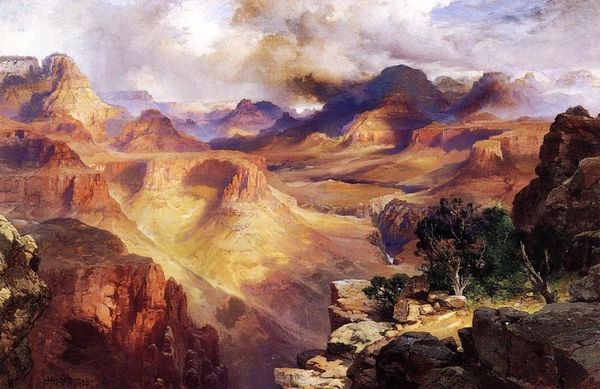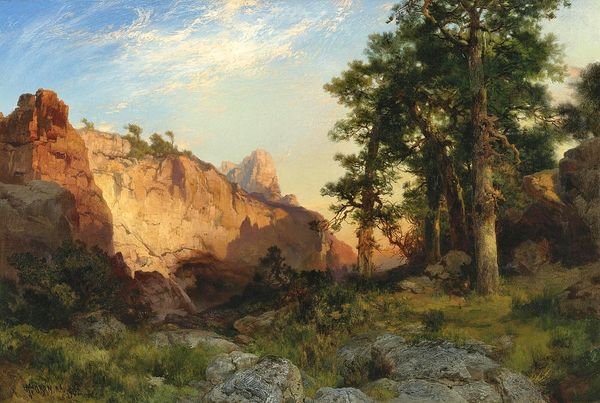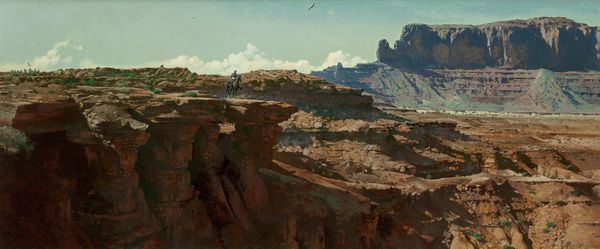
painting, plein-air, oil-paint
#
cliff
#
painting
#
impressionism
#
plein-air
#
oil-paint
#
landscape
#
charcoal drawing
#
impressionist landscape
#
oil painting
#
seascape
Copyright: Public domain
Editor: Here we have Gustave Caillebotte's "Cliff at Villers sur Me," an oil painting from 1880. The stark contrast of light and shadow makes it feel dramatic and a little intimidating. What catches your eye about this piece? Curator: The cliff face is rendered almost as a geological icon. Notice how the layers are delineated. Do you think they might represent a cultural memory embedded in the land itself? It’s a fascinating dialogue between the natural world and the human perception of time, don't you think? Editor: That's an interesting point. I hadn't considered it as a symbolic landscape. So, you're seeing the cliff as more than just a natural formation? Curator: Precisely! Consider how Caillebotte emphasizes the stratified layers. Layers, you see, not only represent geological time but perhaps also allude to the accumulating strata of history and experience. There's a psychological weight here, wouldn't you agree, in the way the cliff looms, almost guarding secrets? Editor: Yes, I do agree! I initially focused on the visual elements but missed the potential for deeper meaning embedded in the image. Thanks to your guidance, I see how Caillebotte’s cliff face embodies both natural power and symbolic resonance. Curator: And for me, thinking through the geological record as cultural memory has added a rich layer of interpretation!
Comments
No comments
Be the first to comment and join the conversation on the ultimate creative platform.
